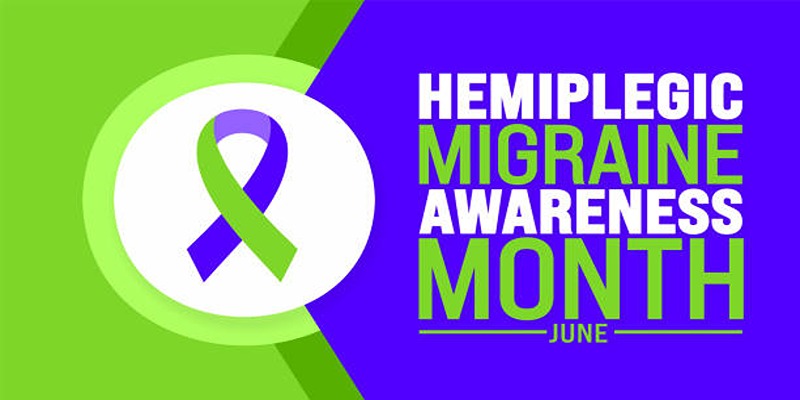Common Signs of Hemiplegic Migraines and Their Impact
Hemiplegic migraines are obviously a type of migraines but are very rare and can be quite frightening and disorienting. They produce temporary weakness or paralysis on one side of the body similar to a spell of the stroke. These migraines often come with other symptoms like intense headaches, vision changes, or trouble speaking. While they don’t cause permanent harm, their symptoms can deeply affect daily life. Understanding the signs and impact of hemiplegic migraines is important for managing them and reducing fear during an episode.
Types of Hemiplegic Migraines

There are two types of hemiplegic migraines: familial and sporadic.
- Familial hemiplegic migraines are inherited and caused by genetics. They are rare, making up only about 5-10% of all migraine cases.
- Sporadic hemiplegic migraines occur without a family history and are not passed down genetically. These cases are even rarer than familial hemiplegic migraines.
Both types can have similar symptoms and impact on an individual’s life. It is important to note that there is no known cure for either type of hemiplegic migraine, but they can be managed with proper treatment and lifestyle adjustments.
Signs of Hemiplegic Migraines
The main symptom of hemiplegic migraines is the weakness or paralysis on one side of the body. This can happen suddenly and last for a few minutes to several hours. Other common signs include:
1. Headaches
Hemiplegic migraines are usually accompanied by severe headache of throbbing or pulsating nature. The headache is usually unilateral and mild to moderate and usually lasts from a few hours up to days. People also have side effects like Nausea, vomiting, and Sensitivity to sound and light.
2. Vision Changes
Hemiplegic migraines symptoms include having vision problems, including seeing a blind spot, blurred vision, or seeing flashing lights. These symptoms, known as visual aura, may start before the migraine or may be part the attack, and only serve to compound the disorientation and distress of the event.
3. Speech Difficulties
Speech can become slurred or difficult to produce, resembling the symptoms of a stroke. Some individuals may struggle to find the right words or may experience temporary speech loss, which can be especially alarming.
4. Tingling or Numbness
A sensation of tingling or numbness often accompanies hemiplegic migraines. This feeling typically starts in the hands or face and may spread to other areas of the body, contributing to the one-sided weakness.
5. Nausea and Sensitivity to Light or Sound
Like other types of migraines, nausea, vomiting, and a heightened sensitivity to light or sound are common symptoms. These can exacerbate the discomfort and make it difficult to function during an episode.
How is a Hemiplegic Migraine Diagnosed?
Diagnosing hemiplegic migraines can be tricky because their symptoms are similar to other conditions, such as strokes or seizures. It is crucial to consult a doctor for an accurate diagnosis and rule out any underlying health issues. Some tests that may be performed include:
- MRI or CT scans to check for brain abnormalities
- Genetic testing for familial hemiplegic migraines
- Blood tests to check for any metabolic disorders
It is essential to track the frequency, duration, and severity of episodes and discuss them with a healthcare professional.
Causes of Hemiplegic Migraines
The exact cause of hemiplegic migraines is still not fully understood. However, research suggests that they may be triggered by changes in the brain’s electrical signals or blood flow, similar to other types of migraines. Some factors that may trigger a hemiplegic migraine include:
- Stress and anxiety
- Hormonal fluctuations
- Certain foods and drinks (e.g., chocolate, caffeine, alcohol)
- Lack of sleep or disrupted sleep patterns
- Environmental stimuli (e.g., bright lights, loud noises)
Impact on Daily Life

Living with hemiplegic migraines can significantly impact a person’s daily life, both physically and emotionally. The unpredictable nature of these migraines can make it challenging to maintain a regular routine, as episodes can strike without warning. This uncertainty may lead to feelings of anxiety or fear about when the next migraine might occur. Physical limitations during an episode, such as paralysis or difficulty speaking, can interfere with work, school, or social activities, potentially leading to frustration or a sense of isolation.
Additionally, the frequency and severity of these migraines may require individuals to make lifestyle adjustments, such as avoiding known triggers, taking preventative medications, or planning their day around the possibility of an episode. Relationships can also be affected, as friends, family, and colleagues may not fully understand the condition, highlighting the importance of education and support.
How to Help Someone With Hemiplegic Migraines
If you have a friend or family member living with hemiplegic migraines, there are several ways you can support them:
1. Educate Yourself
Take the time to learn about hemiplegic migraines, their symptoms, and impact on daily life. This will help you better understand what your loved one is going through.
2. Be Understanding
During an episode, individuals may need quiet and dark environments to manage their symptoms. Be understanding if they need to cancel plans or take some time for themselves.
3. Offer Practical Support
Helping with household chores or running errands during an episode can make a significant difference for someone living with hemiplegic migraines.
Conclusion
Hemiplegic migraines are a complex and often misunderstood condition that can significantly impact the lives of those who experience them. By understanding their symptoms, causes, and treatment options, we can better support individuals living with this challenging condition and help reduce its impact on their daily lives. With proper management techniques, education, and support from loved ones, those with hemiplegic migraines can find ways to cope and improve their overall quality of life. So if you or someone you know is experiencing these types of migraines, remember that there is hope and support available.












